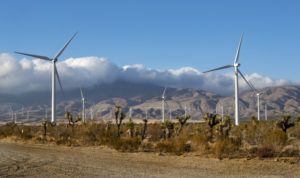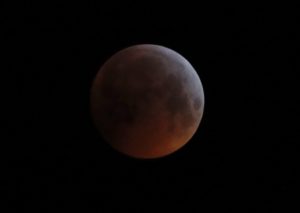| Good morning, and welcome to the Essential California newsletter. It’s Wednesday, May 26. I’m Maria L. La Ganga.
A year after George Floyd was killed by a Minneapolis police officer, his attacker has been convicted of murder and manslaughter, the Los Angeles City Council has voted on how to spend money it is taking out of the police department budget, and “Black Lives Matter” signs grace homes in Beverly Hills, Baldwin Hills and even Boise, Idaho.
But the questions that loom are thorny ones. There has been change, but is it enough? There has been justice, but is it enough? Hearts have been opened, but are they open wide enough? In a country that systemic racism has called home for centuries, when will there ever be enough change? Enough justice? Enough open hearts?
In a powerful piece on the op-ed page marking Tuesday’s terrible anniversary, Times columnist LZ Granderson argues that there definitely isn’t enough of any of those things yet.
“Like many Black folks, my mother relies on prayer to help her go on because horrors like the murder of George Floyd won’t allow her to move on,” he wrote. “She first left her home state of Mississippi more than 50 years ago because her parents, my grandparents, feared for her life.”
Granderson and family planned a road trip in early 2021, looking for a route that would keep them out of “Ku Klux Klan territory.” They couldn’t find one.
“So, if you came here hoping to read a column celebrating all the wonderful things that have come in the wake of Floyd’s death,” he continued, “you should probably look elsewhere.”
Don’t look to the region’s arts institutions if you want to see change, according to Deborah Vankin and Makeda Easter. They surveyed 10 major Southern California museums and 10 major performing arts companies to find out the racial and ethnic makeup of the institutions’ powerful boards of directors.
“At the museums The Times surveyed, Black members made up just 5.4% of the boards — 18 people out of 334 seats at the table — even though Black people make up an estimated 9% of L.A. County’s population,” Vankin and Easter wrote. “Three of the 10 museums had just one Black board member, and three museums had none. Broadening to look at all BIPOC board members, the discrepancy is even more startling: While nearly 74% of L.A. County is nonwhite, only 19.5% of the museum board members identified as nonwhite.”
A somber rally in downtown Los Angeles Tuesday morning brought out a few hundred people who sought to honor Floyd — and a long list of men and women who had been killed in the city by law enforcement or while in police custody.
“We have 700 names, and we’re still counting,” said Black Lives Matter Los Angeles leader Paula Minor.
My colleagues Donovan X. Ramsey and Faith E. Pinho noted how much has changed in Los Angeles since the city, like so many others around the globe, erupted in protest a year ago over Floyd’s death with a policeman’s knee on his neck for nearly 9½ minutes. There has been activism and awareness — but just not enough. Speakers at the rally called for increased movement toward a more just world.
“About a year ago today, people all over the world saw what we’ve been talking about for years … changes were promised,” Minor said. “But here in Los Angeles city and county, the change did not occur.”
And they repeated calls from a year ago for the LAPD to be defunded.
As my colleagues Dakota Smith and David Zahniser write, “one year after George Floyd’s murder in Minneapolis, Los Angeles city leaders finalized their plan for spending money that was moved last summer out of the police department and into programs aimed at helping communities of color.”
The Los Angeles City Council voted Tuesday to have some $89 million originally slated to pay for police services instead go to anti-gang initiatives, universal income programs, homeless services, education and jobs initiatives and more.
Which is great, activists said. However, and it’s a big however, Los Angeles Mayor Eric Garcetti and the City Council recently increased the LAPD’s budget for the fiscal year that starts on July 1.
And that doesn’t sit well among those pushing for change.
.
A crowd marched past Los Angeles City Hall on Tuesday to honor George Floyd. (Al Seib / Los Angeles Times)
And now, here’s what’s happening across California:
The Biden administration unveiled an offshore wind plan for California. The federal government plans to open more than 250,000 acres off the California coast to wind development, the Biden administration announced Tuesday as part of a major effort to ramp up the nation’s renewable energy and cut its climate-warming emissions.
Under the plan, the administration would allow wind power projects to be built in federal waters off the coast of Central California northwest of Morro Bay, as well as a second location west of Humboldt Bay. Officials estimate that the two areas combined could generate 4,600 megawatts of electricity — enough to power 1.6 million homes. Los Angeles Times
.
Wind turbines stand out in the desert near the Tehachapi Mountains in Rosamond, Calif. (Gina Ferazzi / Los Angeles Times)
Southern California home prices jumped 20% in April, knocking down another record. The six-county region’s median home price increased 20.2% year over year to a record $655,000, according to data released Tuesday by real estate firm DQNews. That’s $25,000 more than the previous median price record set in March. Los Angeles Times
But just go a little farther north, and the housing world looks a lot different.
San Francisco ranks near the bottom of U.S. metro areas in home value increases. The U.S. is in the middle of a record-setting boom in home values and a massive squeeze in supply. But the Bay Area has been somewhat cushioned from these effects, according to a recent Zillow report.
The report found that in the metropolitan area of San Francisco — which includes Alameda, Contra Costa, San Mateo and Marin counties — home values increased by 7.4% in April 2021 compared to the previous year. In the San Jose metropolitan area, which includes Santa Clara and San Benito counties, home values were up by 5.9%. San Francisco Chronicle
.
Ads by: Memento Maxima Digital Marketing
@[email protected]
SPACE RESERVE FOR ADVERTISEMENT
L.A. STORIES
L.A. turbo-charged subway and rail construction during the pandemic. Will the riders return? Transit officials are working on several mass transit projects at once — the Purple Line as well as the Crenshaw Line to LAX, the Central Connector subways in downtown L.A. and an extension of the Gold Line in the San Gabriel Valley. Several other lines are in the works thanks to an infusion of tax revenues approved by voters and with the hope of having a stronger transit network in place by the 2028 Olympics. The big question now is whether riders will return as the economy reopens — and how fast that would happen. Los Angeles Times
THE CORONAVIRUS
California hit Foster Farms with a big fine for failing to protect workers from a COVID outbreak. The California Division of Occupational Health and Safety has cited Foster Farms for failing to protect workers from COVID-19 at its Livingston poultry plant and distribution center. The agency has issued the multibillion-dollar poultry company a proposed penalty of $181,500 — one of the steepest citations it has levied during the COVID-19 pandemic. Foster Farms will be appealing the violation, said California Department of Industrial Relations spokesperson Erika Monterroza. Fresno Bee
A federal judge tossed out a lawsuit filed by anti-masker Amber Gilles. The anti-masker and “Starbucks-shamer” sued Sprouts in October after being denied entry for not wearing a mask. On Monday, a federal judge threw out her complaint. Judge Gonzalo P. Curiel agreed with lawyers for defendant SF Markets LLC that Gilles, 36, listed no valid causes of action. She argued that on Aug. 6 her rights were violated under Title III of the Americans with Disabilities Act and the state’s Unruh Civil Rights Act. Times of San Diego
POLITICS AND GOVERNMENT
A Northern California city apologized for its treatment of early Chinese immigrants. Officials in Antioch have apologized for the city’s treatment of Chinese immigrants who arrived during the Gold Rush, atoning for its past as a “sundown town” where the Chinese were barred from the streets after dark. Mayor Lamar Thorpe said the city was going to designate the site of its former Chinatown as a historic district. New York Times
.
Ads by: Memento Maxima Digital Marketing
@[email protected]
SPACE RESERVE FOR ADVERTISEMENT
|
HEALTH AND THE ENVIRONMENT
California finds 4% of fruits and vegetables contaminated by pesticide. A new report shows that 4% of California produce sold in grocery stores contains illegal amounts of harmful pesticides. While regulators say this is well within safe limits, advocates find that statement “alarming.” Salinas Californian
Chances are you slept through the total eclipse of the “super flower blood moon.” But don’t you wonder why it’s even called that? The full eclipse was set to be visible low in the sky in the L.A. area for about 14 minutes starting at 4:11 a.m. local time May 26, according to timeanddate.com. It’s called a super moon, meaning it’s bigger and about 15% brighter than usual. Super moons occur when the moon comes closest to Earth. “Flower moon” is the name given to the moon this month because it’s when wildflowers bloom. Los Angeles Times
.
The Earth’s shadow falls across the full moon seen above Brighton, southeast England, in 2019. (Alastair Grant / Associated Press)
CALIFORNIA CULTURE
A major Bay Area art festival has been canceled over a homeless camp controversy. Even though coronavirus cases are dropping, vaccination rates are climbing and pandemic rules are easing, the storied Sausalito Art Festival won’t be back this year. It’s fallen victim to a months-long controversy concerning a new homeless encampment that recently formed along Sausalito’s scenic waterfront. Marin Independent Journal
The secret history of L.A.’s glitzy gambling boat kingpin — and the raid that sunk him. The gambling boats of the 1920s and ’30s may seem quaint now, given how easy it is to legally gamble in California, and aquatic raids just a curiosity. But in a roundabout way, what the press called the Battle of Santa Monica Bay helped launch Las Vegas as we know it. And key to it all was the enterprising man few remember, Tony Cornero. Los Angeles Times
Free online games
Get our free daily crossword puzzle, sudoku, word search and arcade games in our new game center at latimes.com/games.
CALIFORNIA ALMANAC
Los Angeles: partly cloudy, 77. San Diego: sunny, 70. San Francisco: sunny, 63. San Jose: sunny, 75. Fresno: sunny, 91. Sacramento: partly cloudy, 90.
AND FINALLY
Today’s California memory comes from Phil Goss:
In 1964, I traveled with my Florida-based family to Los Angeles for a mid-summer vacation. Along with the required trips to Disneyland, Knott’s Berry Farm, Munsters House, and McHales Navy island, we went to Dodger Stadium for a weekend doubleheader. I was told that Sandy Koufax and Don Drysdale started the games. During the game I could not fathom the noise I was hearing but was later told it was the crowd on their feet pounding the stadium pavement each time Maury Wills reached first base. Far louder than anything I ever heard as a young Florida boy.
If you have a memory or story about the Golden State, share it with us. (Please keep your story to 100 words.)
Please let us know what we can do to make this newsletter more useful to you. Send comments to [email protected]. |